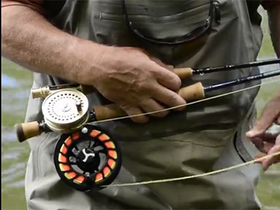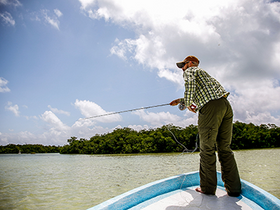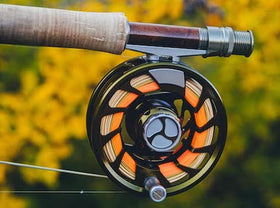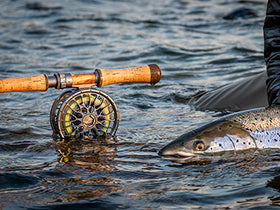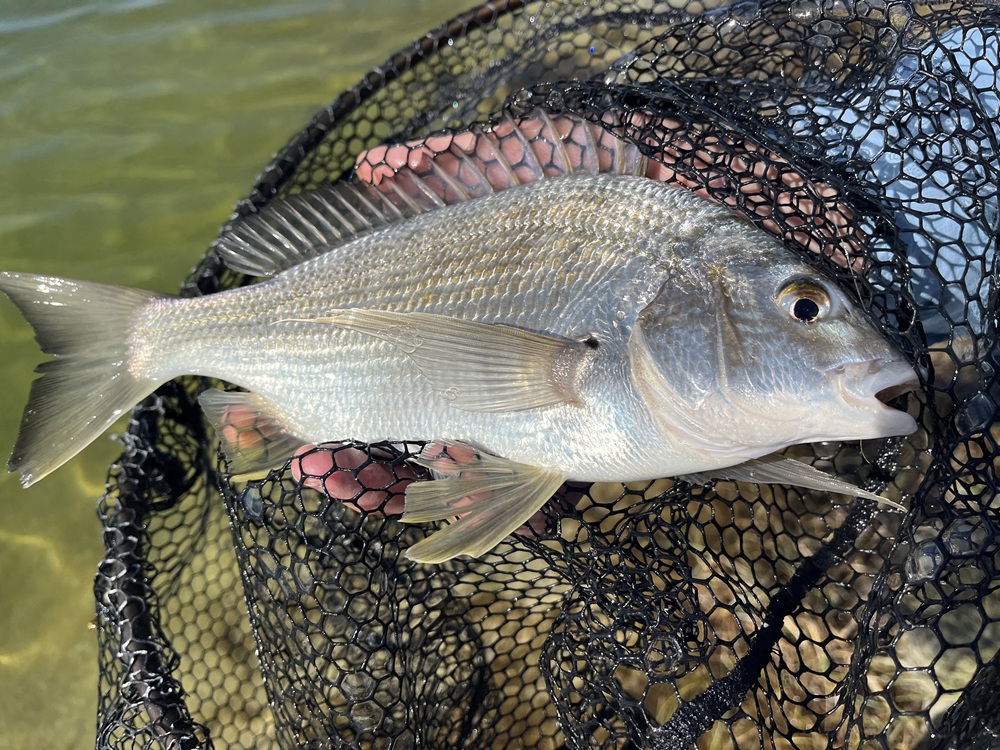
The possibility of a mulloway - even if remote - is never far from your mind on the lower Glenelg.
After my last estuary victory – a PB EP – perhaps I was due for a fall… although writing this weeks later, I still feel hard done by.
During the Glenelg estuary trip in question, the fishing on day one was pretty good: lots of EPs, and a few bream. Then the action lifted further on day two. Every so often, nature gifts us special conditions. On this occasion, it was blue skies, clear water and a helpful sun angle.
The upshot was that, among all the mullet, small salmon and huge schools of various baitfish, I could polaroid lots of bream quite easily. And some were beauties too – approaching 40cm, maybe even a bit more. This of course was exciting. But then, half an hour in, a couple of even larger shapes scooted through on the edge of my vision.
There were no doubts about the bream.
Call me negative, but whenever I first spot what may be outsized fish, my initial reaction is to rule out the less thrilling options. In this case, movement with no current discounted a fish-shaped piece of wood, rock or weed. (Don’t laugh, fishing mate Dale and I once spent 15 minutes changing flies and taking turns casting to an uncooperative Buckland River beauty, which we even convinced ourselves was moving slightly to feed. It turned out to be a rock so perfectly trout-shaped – and, according to Dale, trout coloured – the deception was only revealed when I poked it with the rod tip!)
Back on the estuary, and by process of elimination, I moved on to the possibility of less glamorous fish. Carp are often the number one suspect in these cases, although on this occasion, salinity ruled them out. Sea mullet? Might have been; however the shape and colour seemed wrong.
Of the more exciting possibilities, really big Australian salmon were a chance, though for some reason, I have never encountered these on the Glenelg. Large sea-run trout? Technically could be, I supposed – the odd trout is found in the freshwater parts of the Glenelg catchment. But realistically, encountering two swimming together midwater, would be very long odds.
That left a species I had thought of from the start but barely wanted to consider, even to myself: mulloway. And I certainly wasn’t going to say anything to my mate Peter, at that stage a few hundred metres away. I could imagine his mocking (if good-natured) response; mulloway are supposed to be a cryptic fish, not known for gliding around in clear water in bright sunlight. Also, I haven’t exactly got a broad database of personal mulloway sightings to rely on: I’ve caught just one, and I lost another many years ago.
Still, something about the sleek, shadowy shapes I’d just seen, immediately reminded me of the mulloway I caught the winter before last as it swum around trying to avoid the landing net. And it’s an inescapable fact that if you’re an angler on the Glenelg River, a recognised mulloway haunt, this prize, however unlikely, is never far from your mind.
***
Whatever I thought or believed, the temptation to continue targeting the unambiguously visible bream – one of my favourite species – overrode any whim to change gear and tactics to something better suited to mulloway.
Some minutes (and another nice bream) after I’d last sighted the pair of mystery fish, I cast well out and let my medium-sized olive and red BMS settle on 3X fluorocarbon, and began a strip-pause retrieve.
I assumed the jolting take which followed was a bream once again. Even when my strip-strike came up tight and a couple of metres of loose flyline shot through my fingers, I was still thinking bream – although once the reel’s drag was doing its job and still the fish was motoring off, I thought it must be a really big one.
By now, my bent rod and rapidly-disappearing line had caught Peter’s attention, and he walked over to see what was going on. At that moment, conveniently, the broad, green shiny back of whatever I was attached to, broke the surface about 30 metres out.
And then, just as I felt I was gaining a little control, with line running off the reel more slowly, and the rod tip absorbing the fish’s lunges, everything went slack. I wound in frantically while walking backwards, trying desperately to regain tension. But it was no use. The fish was gone.
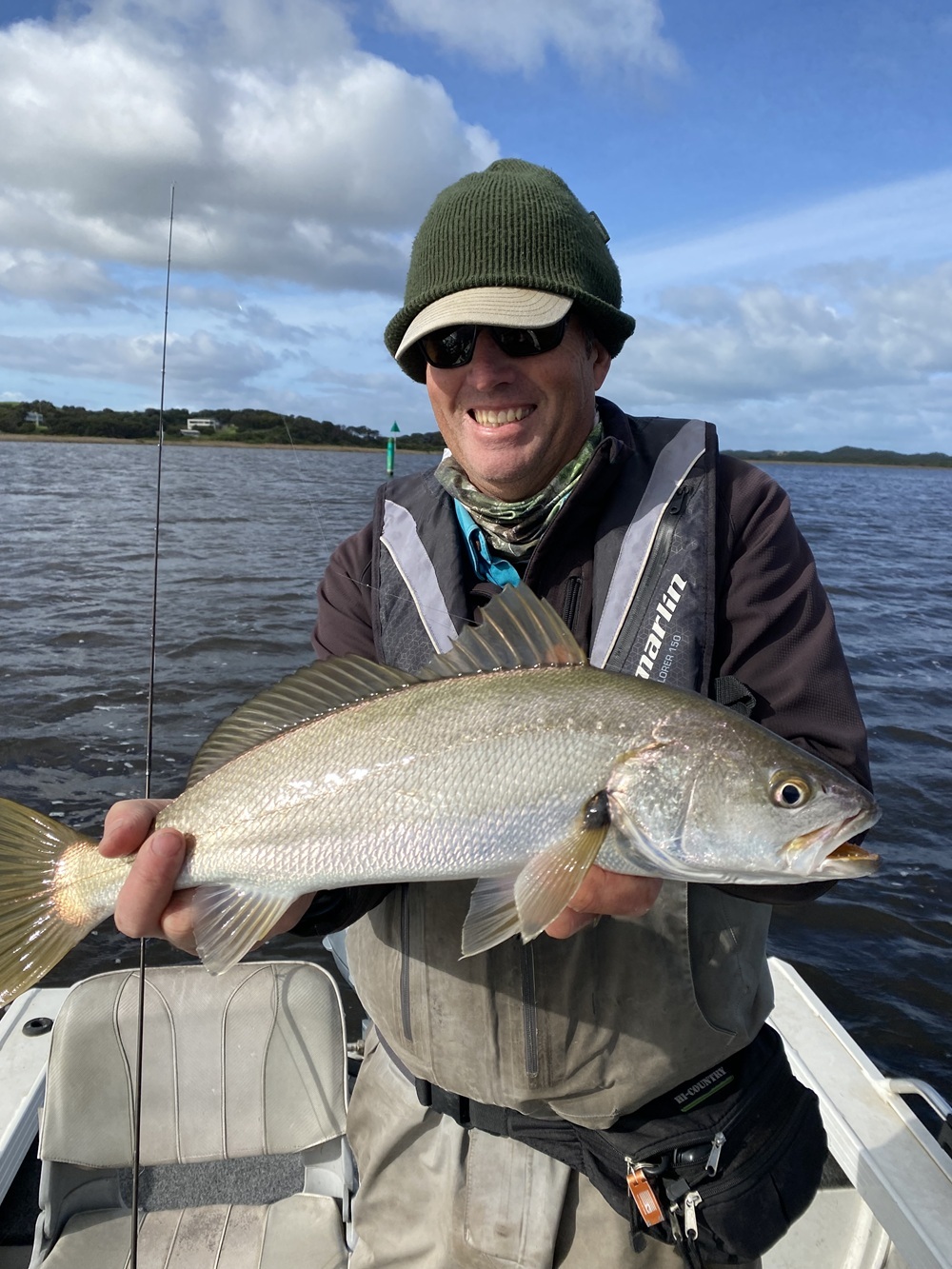
Was it one of these?
There’s only been a handful of times in my life when, for no apparent reason, I’ve lost a really significant fish. There was that big ‘cat’s eye’ chinook at Bullen Merri, a huge brown on the Rolling River in New Zealand, and now the maybe mulloway on the Glenelg. All were special fish that seemed to be within my control, and then they just came off. No tactical errors, no gear failures. Just suddenly off the hook.
There are of course plenty of other significant lost fish over my life which I can look back on with a grimace. (And yes, it’s true: the decent fish you lose are far more memorable than those you successfully land.) For example, only the evening before the maybe mulloway, something substantial whacked my salt Woolly Bugger, tied on a heavy gauge stainless-steel hook. The fly came back, but the actual hook had been snapped clean off at the bend.
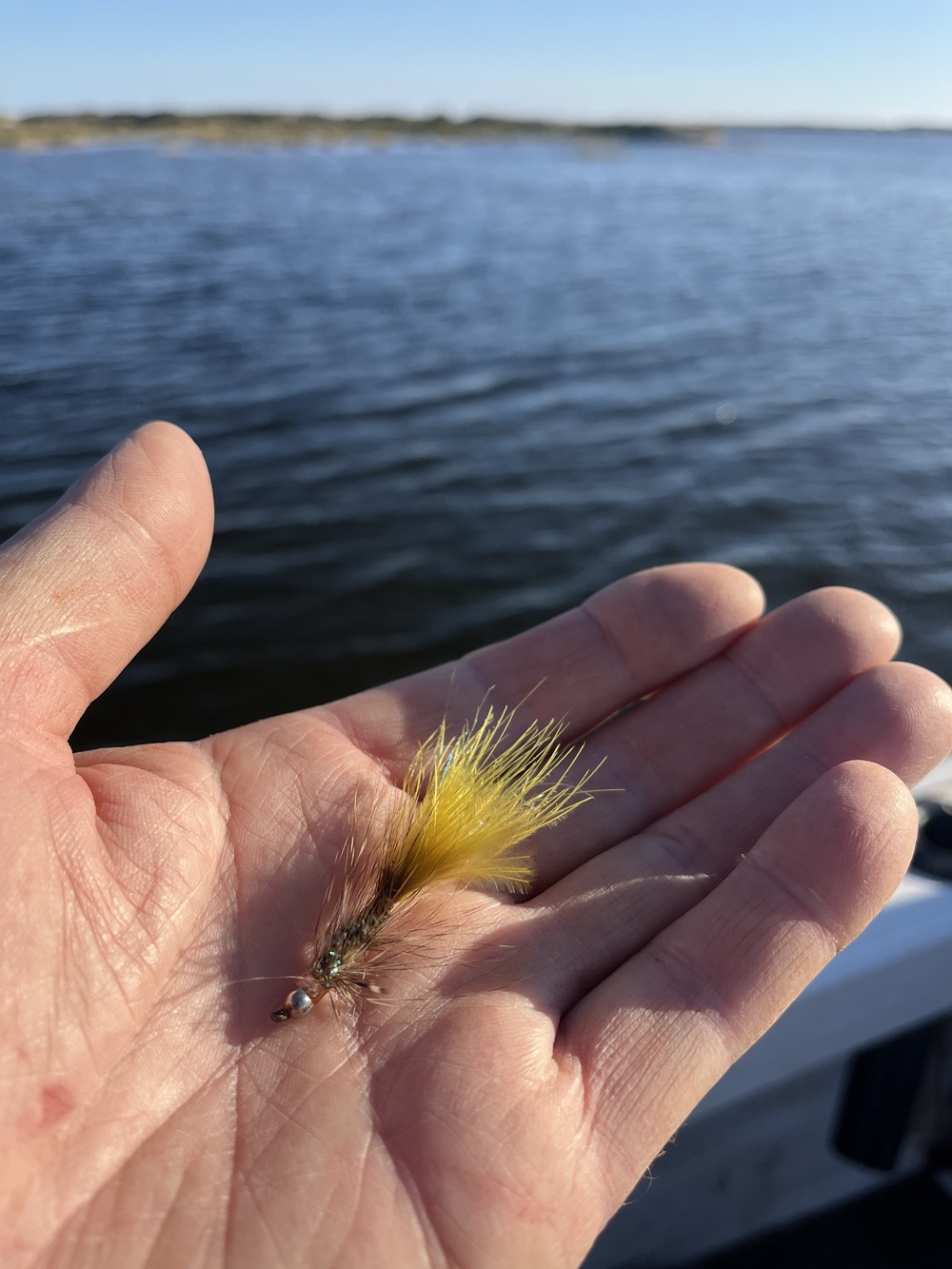
At least with a broken hook, there's an explanation for your loss.
With fish lost through a clumsy net swipe, or broken tippet, or bent or busted hook, or careless slack line, there’s an obvious reason. You may wish you could have your time again, but at least there’s some sort of closure and finality. But those fish that just come off for no reason? They haunt you forever.
Philip Weigall
Editor





